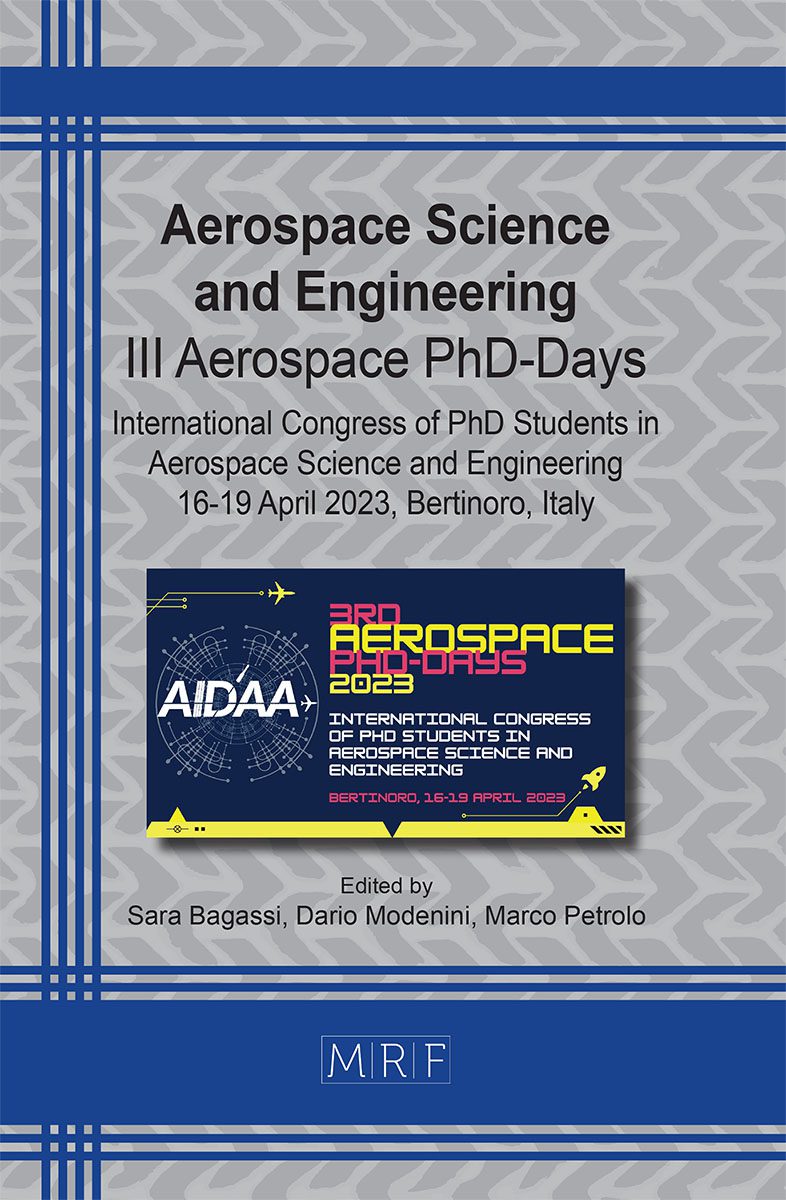Autonomous navigation methods for spacecraft formation flying in cislunar space
Sergio Bonaccorsi
download PDFAbstract. Due to the increasing number of deep space missions in the following years, the focus on methods and strategies that enable a spacecraft to perform critical operations autonomously is becoming crucial. In the context of cislunar space, this research aims to investigate state estimation methods for such a highly nonlinear dynamics environment in order to identify the best operational scenarios and constraints that enable accurate performance for autonomous spacecraft navigation. In particular, the LiAISON navigation method is considered in the context of a formation of satellites moving in cislunar space exploiting the presence of other cooperative satellites to exchange inter-satellite signals to get range measurements.
Keywords
Three Body Problem, Autonomous Navigation, Formation Flying
Published online , 9/1/2023, 8 pages
Copyright © 2023 by the author(s)
Published under license by Materials Research Forum LLC., Millersville PA, USA
Citation: Sergio Bonaccorsi, Autonomous navigation methods for spacecraft formation flying in cislunar space, Materials Research Proceedings, Vol. 33, pp 1-8, 2023
DOI: https://doi.org/10.21741/9781644902677-1
The article was published as article 1 of the book Aerospace Science and Engineering
![]() Content from this work may be used under the terms of the Creative Commons Attribution 3.0 license. Any further distribution of this work must maintain attribution to the author(s) and the title of the work, journal citation and DOI.
Content from this work may be used under the terms of the Creative Commons Attribution 3.0 license. Any further distribution of this work must maintain attribution to the author(s) and the title of the work, journal citation and DOI.
References
[1] Newman, C. P., Davis, D. C., Whitley, R. J., Guinn, J. R., & Ryne, M. S. (2018). Stationkeeping, orbit determination, and attitude control for spacecraft in near rectilinear halo orbits.
[2] Guinn, J. R., Bhaskaran, S., Ely, T. A., Kennedy, B. M., Martin-Mur, T. J., Park, R. S., … & Vaughan, A. T. (2019). The Deep Space Positioning System (DPS)-navigator concept for the Lunar Gateway.
[3] Bradley, N., Olikara, Z., Bhaskaran, S., & Young, B. (2020). Cislunar navigation accuracy using optical observations of natural and artificial targets. Journal of Spacecraft and Rockets, 57(4), 777-792. https://doi.org/10.2514/1.A34694
[4] Hill, K., & Born, G. H. (2007). Autonomous interplanetary orbit determination using satellite-to-satellite tracking. Journal of guidance, control, and dynamics, 30(3), 679-686. https://doi.org/10.2514/1.24574
[5] Greaves, J. A., & Scheeres, D. J. (2021). Relative estimation in the cis-lunar regime using optical sensors. In Proceedings of the Advanced Maui Optical and Space Surveillance Technologies Conference.
[6] Christian, J. A., & Lightsey, E. G. (2009). Review of options for autonomous cislunar navigation. Journal of Spacecraft and Rockets, 46(5), 1023-1036. https://doi.org/10.2514/1.42819
[7] Yun, S., Tuggle, K., Zanetti, R., & D’Souza, C. (2020). Sensor configuration trade study for navigation in near rectilinear halo orbits. The Journal of the astronautical sciences, 67, 1755-1774. https://doi.org/10.1007/s40295-020-00224-1
[8] Winternitz, L. B., Hassouneh, M. A., Long, A. C., Wayne, H. Y., Small, J. L., Price, S. R., & Mitchell, J. W. (2022, February). A High-fidelity Performance and Sensitivity Analysis of X-ray Pulsar Navigation in Near-Earth and Cislunar Orbits. In 44th Annual AAS Guidance, Navigation and Control Conference. The American Astronautical Society (AAS).
[9] Greaves, J., & Scheeres, D. Autonomous Guidance and Navigation with Optical Measurements for Formation Flying in Cislunar Space.
[10] Turan, E., Speretta, S., & Gill, E. K. A. (2022). Performance Analysis of Radiometric Autonomous Navigation for Lunar Satellite Network Topologies. In 11th International Workshop on Satellite Constellations and Formation Flying,.
[11] Turan, E., Speretta, S., & Gill, E. (2022). Autonomous Crosslink Radionavigation for a Lunar CubeSat Mission. arXiv preprint arXiv:2204.14155. https://doi.org/10.3389/frspt.2022.919311
[12] Turan, E., Speretta, S., & Gill, E. (2022, March). Autonomous navigation performance of cislunar orbits considering high crosslink measurement errors. In 2022 IEEE Aerospace Conference (AERO) (pp. 1-11). IEEE. https://doi.org/10.1109/AERO53065.2022.9843772
[13] Turan, E., Speretta, S., & Gill, E. (2022). Radiometric autonomous navigation for cislunar satellite Formations. In NAVITEC 2022.
[14] Wang, W., Shu, L., Liu, J., & Gao, Y. (2019). Joint navigation performance of distant retrograde orbits and cislunar orbits via LiAISON considering dynamic and clock model errors. Navigation, 66(4), 781-802. https://doi.org/10.1002/navi.340
[15] Cheetham, B. (2021). Cislunar autonomous positioning system technology operations and navigation experiment (Capstone). In ASCEND 2021 (p. 4128). https://doi.org/10.2514/6.2021-4128
[16] Thompson, M. R., Forsman, A., Chikine, S., Peters, B. C., Ely, T., Sorensen, D., … & Cheetham, B. (2022, January). Cislunar Navigation Technology Demonstrations on the CAPSTONE Mission. In Proceedings of the 2022 International Technical Meeting of The Institute of Navigation (pp. 471-484). https://doi.org/10.33012/2022.18208
[17] Viegas, D., Batista, P., Oliveira, P., & Silvestre, C. (2012, June). Decentralized range-based linear motion estimation in acyclic vehicle formations with fixed topologies. In 2012 American Control Conference (ACC) (pp. 6575-6580). IEEE. https://doi.org/10.1109/ACC.2012.6314915
[18] Busse, F., & How, J. (2002). Real-time experimental demonstration of precise decentralized relative navigation for formation flying spacecraft. In AIAA guidance, navigation, and control conference and exhibit (p. 5003). https://doi.org/10.2514/6.2002-5003
[19] Mu, H., Bailey, T., Thompson, P., & Durrant-Whyte, H. (2011). Decentralised solutions to the cooperative multi-platform navigation problem. IEEE Transactions on Aerospace and Electronic Systems, 47(2), 1433-1449. https://doi.org/10.1109/TAES.2011.5751268
[20] Pesce, V. (2019). Autonomous navigation for close proximity operations around uncooperative space objects.
[21] Valli, M., Armellin, R., Di Lizia, P., & Lavagna, M. R. (2014). Nonlinear filtering methods for spacecraft navigation based on differential algebra. Acta Astronautica, 94(1), 363-374. https://doi.org/10.1016/j.actaastro.2013.03.009












